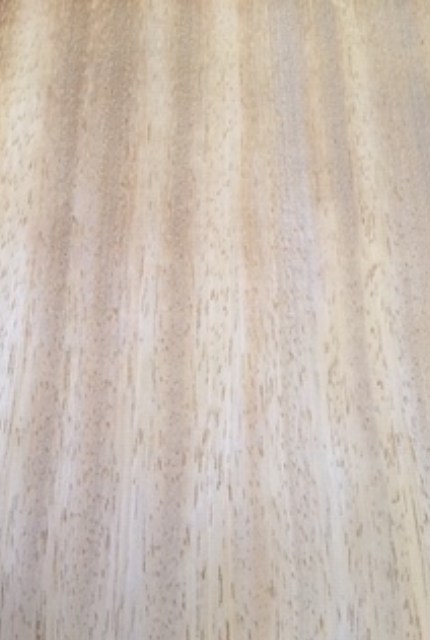March 26, 2021

Color/Appearance: Heartwood is usually a yellow to golden or medium brown, with color tending to darken over time. Pale yellow sapwood is clearly demarcated from the heartwood.
Grain/Texture: Iroko has a medium to coarse texture, with open pores and an interlocked grain.
Endgrain: Diffuse-porous; large to very large pores in no specific arrangement, very few to few; solitary and radial multiples of 2-3; tyloses common; growth rings indistinct; medium rays visible without lens, spacing wide to normal; parenchyma banded, paratracheal parenchyma vasicentric, aliform (winged and lozenge), and confluent.
Rot Resistance: Iroko is very durable, and is resistant to both rot and insect attack; it’s sometimes used as a substitute for Teak.
Workability: Generally easy to work, with the exception of its interlocked grain, which may cause some tearout during surfacing operations. Also, deposits of calcium carbonate are sometimes present, which can have a significant dulling effect on cutters. Iroko glues and finishes well.
Odor: No characteristic odor.
Allergies/Toxicity: Although severe reactions are quite uncommon, Iroko has been reported as a sensitizer. Usually most common reactions simply include eye, skin, and respiratory irritation. Iroko can also cause other health effects in sensitive individuals, such as asthma-like symptoms, boils, and hypersensitivity pneumonitis. See the articles Wood Allergies and Toxicity and Wood Dust Safety for more information.
Pricing/Availability: Iroko is imported and available for a moderate price. Veneer can also be seen for sale, and is likewise affordably priced.
Sustainability: This wood species is not listed in the CITES Appendices, but is on the IUCN Red List. It is listed as vulnerable due to a population reduction of over 20% in the past three generations, caused Common Uses: Veneer, flooring, furniture, cabinetry, boatbuilding, turned items, and other small specialty wood items.by a decline in its natural range, and exploitation.
Common Uses: Veneer, flooring, furniture, cabinetry, boatbuilding, turned items, and other small specialty wood items.
Comments: Given the high prices of genuine Teak, Iroko could be considered a low-cost alternative. The wood is stable, durable, and has an overall look that somewhat resembles Teak.